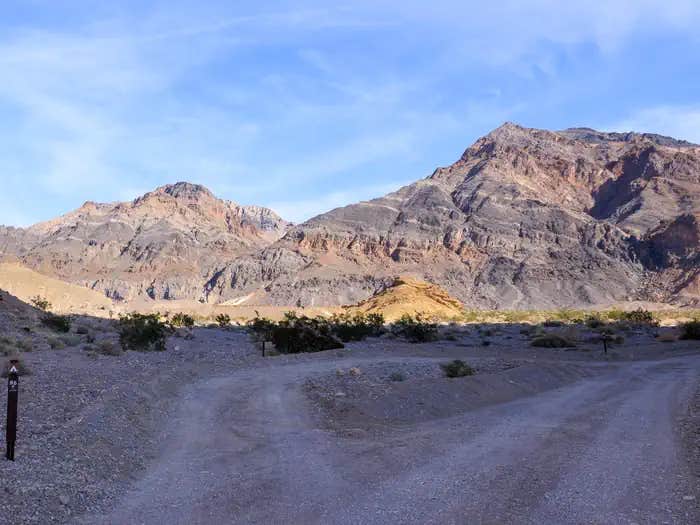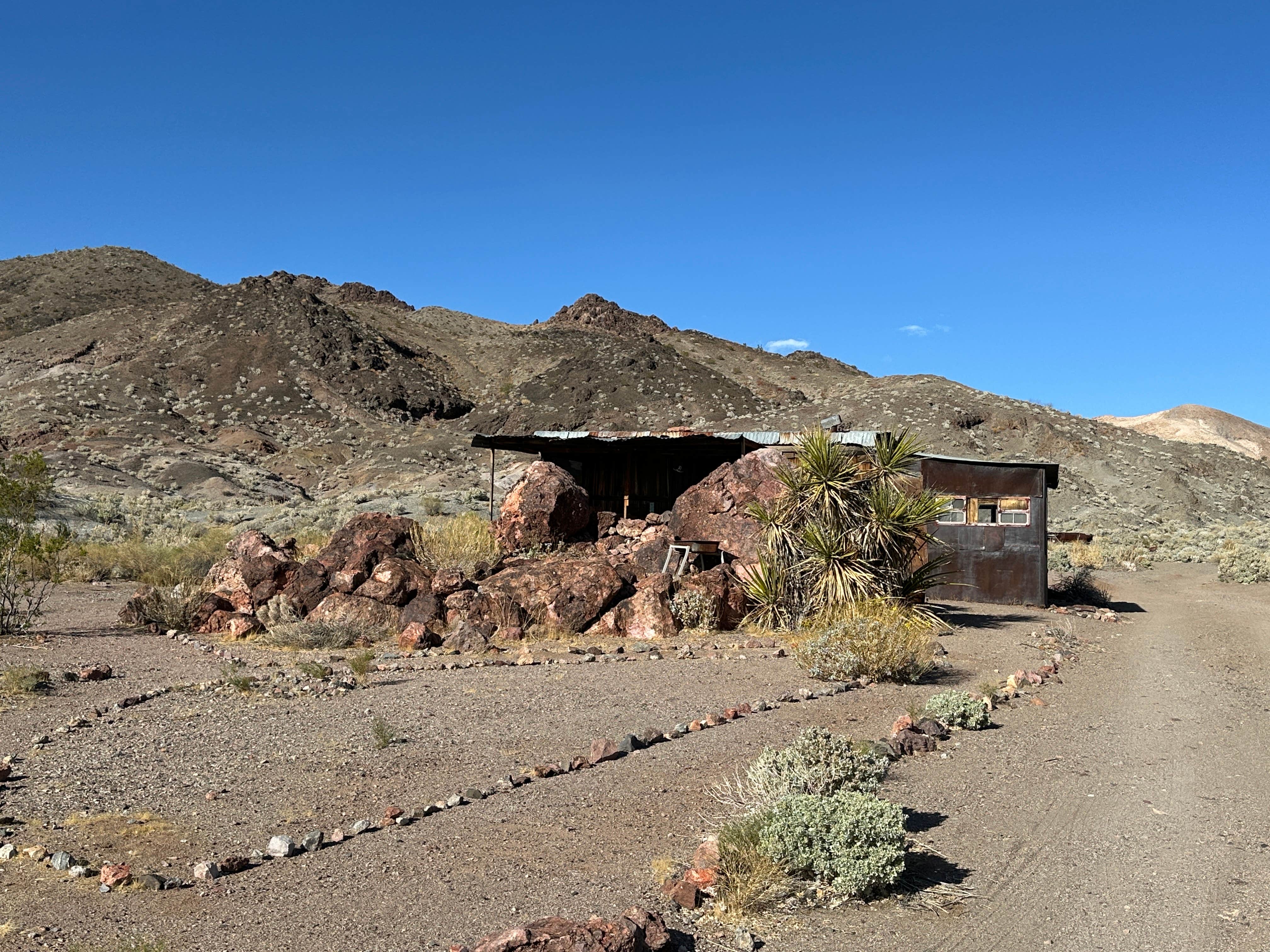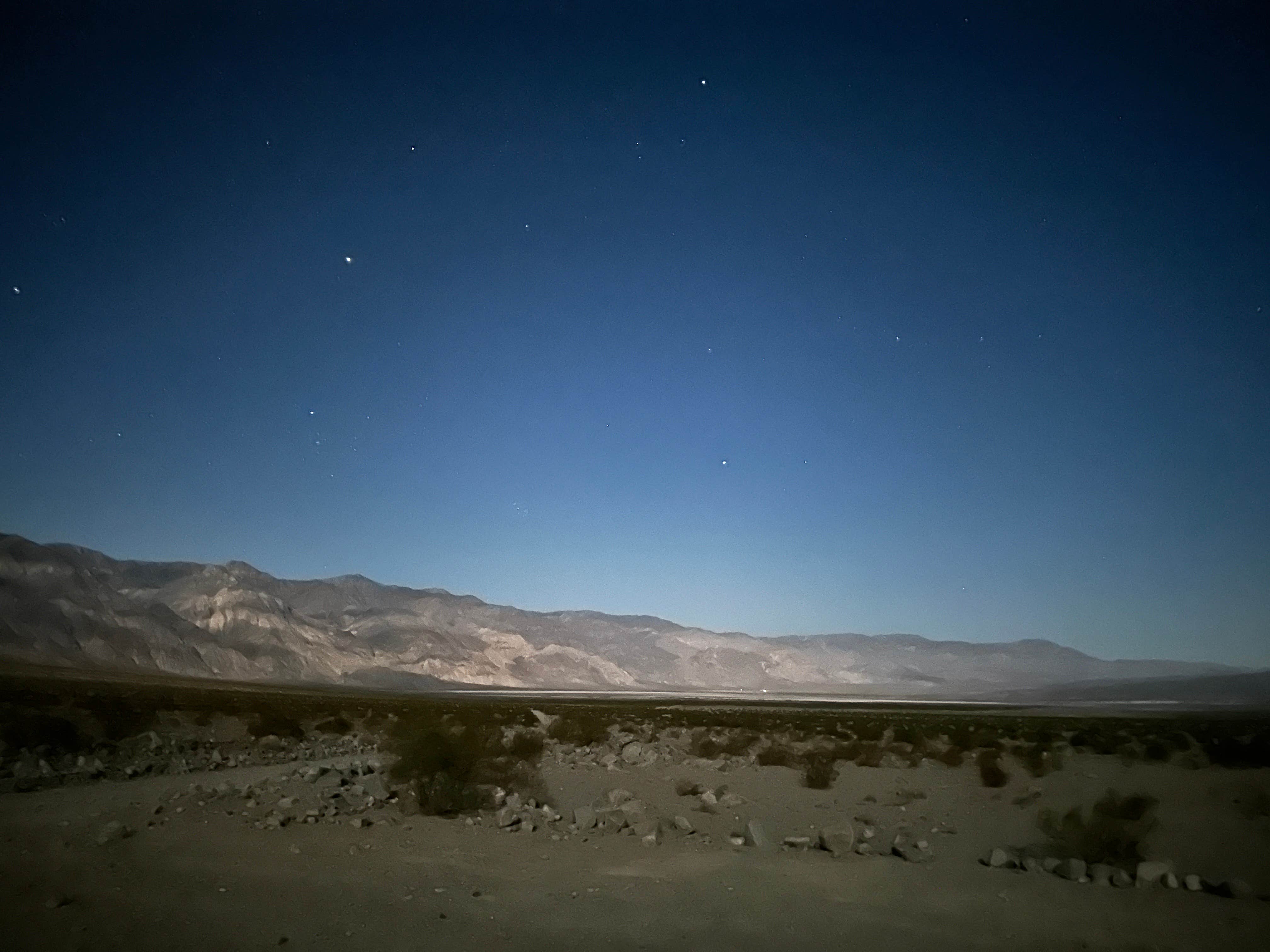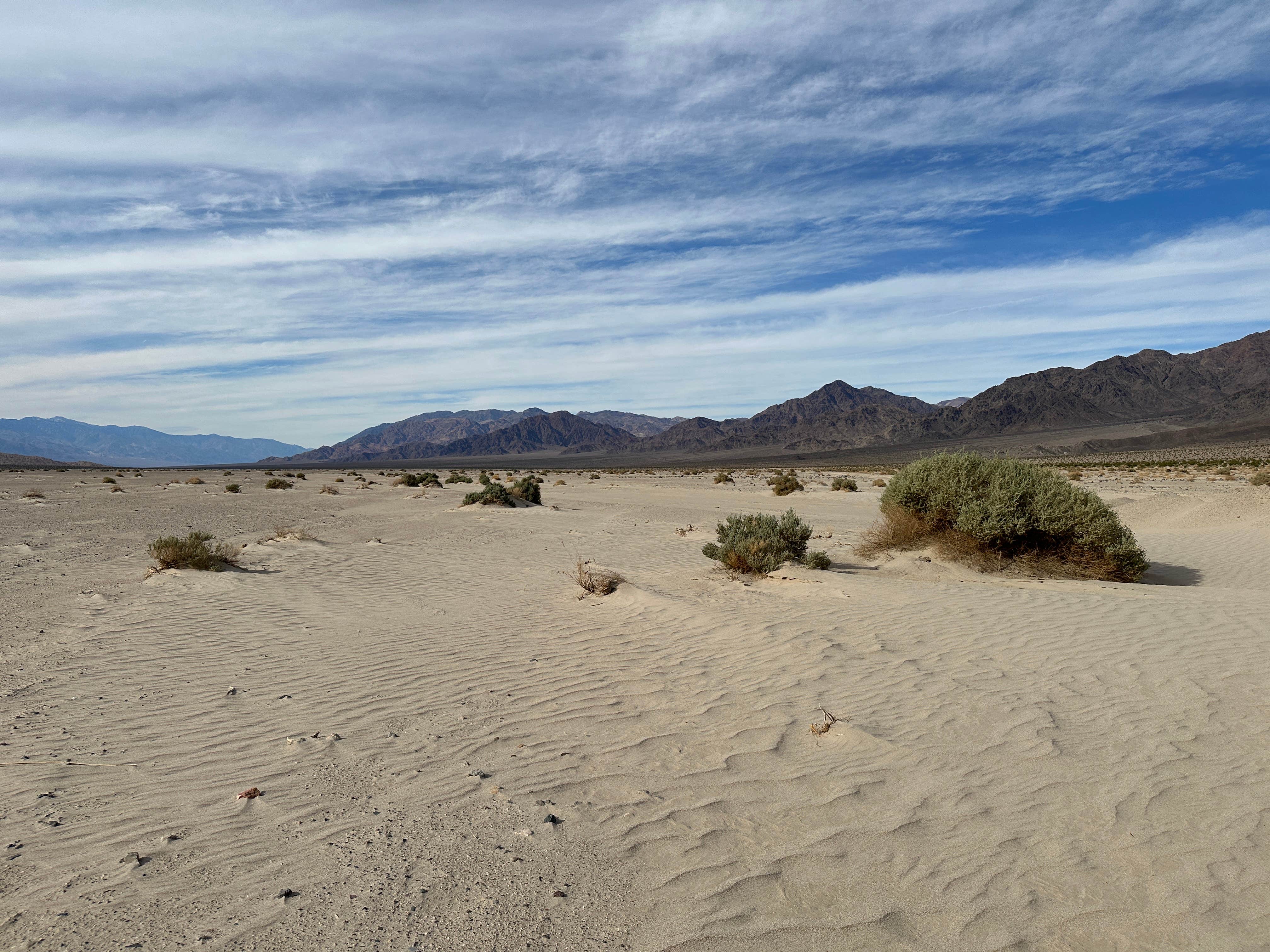Public Campground
Death Valley Backcountry Roadside Camping — Death Valley National Park
Warning 1 Alert is In Effect
There is 1 alert for this campground. Camp safely!
Warning 1 Alert is In Effect
There is 1 alert for this campground. Camp safely!
FIRE RESTRICTIONS IN PLACE: Campfires are only permitted with the use of a fire pan or other fireproof barrier that prevents the fire from directly contacting the ground and does not damage the natural surface. NO wood gathering is allowed. All accumulated ashes and burned wood must be collected and packed out.
Death Valley Backcountry Roadside Camping is located in a vast desert landscape with flat plains and rugged mountains. Temperatures can range from highs of over 100°F in the summer to cooler winter lows around 40°F. Nearby attractions include Badwater Basin, the lowest point in North America, and the Mesquite Flat Sand Dunes, offering unique exploration opportunities.
Description
Overview
PLEASE BE AWARE:These are primitive sites that do not offer water, electricity, toilet access, or any amenities.__Most primitive roadside campsites require a high clearance vehicle, and 4-wheel drive is highly encouraged. Road conditions can change quickly. High clearance vehicles are defined as a SUV or truck with at least 15 inch tire rims AND at least 8 inches of ground clearance from the lowest point of the frame, body, or suspension.__Despite its morbid name, a great diversity of life survives in Death Valley! In this below-sea-level basin, steady drought and record summer heat make Death Valley a land of extremes. Yet, each extreme has a striking contrast. Towering peaks are frosted with winter snow. Rare rainstorms bring vast fields of wildflowers. Lush oases harbor tiny fish and refuge for wildlife and humans. Death Valley has sunk below sea level through geologic processes over time. It lies within the Mojave Desert and is the hottest, driest and lowest location in North America. Despite its extreme climate, the park boasts a diversity of ecosystems, including colorful badlands, snow-covered peaks, desolate sand dunes, rugged canyons and flat, dry basins called playas._Backcountry Roadside camping in Death Valley provides a primitive backcountry experience in the park's premier wilderness. All of these designated sites are located in remote locations and campers must be self-sufficient. Visit the park's Backcountry Camping page for more information._
Recreation
There are over 3.4 million acres of Death Valley to explore. The popular main attractions are accessible by paved roads and more remote areas of the park will require high clearance, 4-wheel drive. Please visit the park's website for helpful tips when planning your trip.
Facilities
Backcountry Roadside Campsites: Primitive roadside camping with your vehicle in designated campsites along rugged backcountry dirt roads. These are primitive, roadside campsites which require extra trip planning. Please take the time to plan and carefully prepare your itinerary. Roadside campsites are intended for high clearance vehicles only. Trailers, RVs and passenger vehicles will not be able to access most of these campsites. High clearance vehicles are defined as a SUV or truck, with at least 15 inch tire rims, and at least 8 inches of ground clearance, as measured from the lowest point of the vehicle (frame, suspension, body, differential).
Natural Features
Death Valley National Park contains the largest wilderness in the contiguous United States (over 3,190,400 acres or roughly 93% of the entire National Park!). Nearly a thousand miles of paved and dirt roads intersect the wilderness, providing ready access to all but the most remote locations. Backcountry travel in Death Valley National Park can be challenging, but the opportunities for experiencing solitude, sweeping vistas, dark night skies, and awesome geology abound within the three million acres of designated wilderness in the park. There are few established trails in the park, but hikers can follow canyon bottoms, open desert washes, alluvial fans, and abandoned dirt roads to get around.
Contact Info
This location is unstaffed. To speak with our main office for general information, please call: (760) 786-3200.
Charges & Cancellations
Changes/Modifications Changes may be made prior to the day the reservation begins. If a customer wants to switch dates that are entirely outside of the original reservation dates, there is a $10 change fee. There is no change fee if a customer extends or shortens a reservation, as long as the change includes dates from the original reservation. If a reservation is made that includes dates beyond the maximum booking window, that reservation cannot be changed until 18 days have passed from the original booking date. Cancellations Customers may cancel their reservation prior to day of arrival both on-line and through the call center. A $10 cancellation fee will be withheld from any refund due back the customer. Depending on when you cancel in relation to your arrival day, it may be considered a late cancellation (see below). Late Cancellations or Cancellations within the Cut-off Window A customer who cancels a reservation the day before or on the day of arrival will have a $10.00 cancellation fee withheld from their refund AND will forfeit the first night's use fee (not to exceed the total paid for the original reservation). Cancellations for a one-night reservation will forfeit the entire amount paid and will not be subject to an additional service fee. Review Rules and Reservation Policies for additional details about changes and cancellations.
Fee Info
Backcountry Roadside Camping reservations are available on a 6-month rolling basis prior to planned start dates. Camping Use Fee: $10 per night
Detours Nearby

Minietta Road
56 min away

Pahrump Land in the middle of Mojave Desert
56 min away
Drive Time
- 1 hr 50 min from Las Vegas, NV
- 3 hrs 36 min from Bakersfield, CA
- 4 hrs 39 min from Visalia, CA
- 4 hrs 47 min from Hanford, CA
Location
Death Valley Backcountry Roadside Camping — Death Valley National Park is located in California
Directions
Note: Do not exclusively rely on GPS navigation while travelling in Death Valley National Park. Travelers should always carry up-to-date road maps and be aware that there is no cell phone service along most park roads. Always travel prepared to self-rescue as help may be hours away. There is no specific street address for the park. Furnace Creek Visitor Center coordinates: 36.46171, -116.86682 Stovepipe Wells Ranger Station coordinates: 36.608048, -117.144504 Paved Entrances East Side: CA 190 from Death Valley Junction, CA SR 374 from Beatty, NV CA 178 from Shoshone, CA West Side: CA 190 from Olancha, CA (SR 136 from Lone Pine, CA) SR 178 (Panamint Valley Rd) from Trona, CA Cottonwood Marble Canyon Rd From CA-190 enter Stovepipe Wells Campground. Turn left on the Cottonwood Marble Road marked by a sign for the airport. Check conditions prior to travel.
Address
Death Valley National Park
Death valley, CA 92328
Coordinates
36.461744 N
116.866609 W
Connectivity
- T-MobilePossible CoverageVerified by 29 usersLast on 12/11/25
- VerizonPossible CoverageVerified by 36 usersLast on 12/11/25
- AT&TLTEGood CoverageVerified by 130 usersLast on 12/11/25
Connectivity
- T-MobilePossible CoverageVerified by 29 usersLast on 12/11/25
- VerizonPossible CoverageVerified by 36 usersLast on 12/11/25
- AT&TLTEGood CoverageVerified by 130 usersLast on 12/11/25
Access
- Drive-InPark next to your site
- Walk-InPark in a lot, walk to your site.
- Hike-InBackcountry sites.
Site Types
- Tent Sites
- RV Sites
- Standard (Tent/RV)
- Dispersed
Features
For Campers
- Reservable
- Alcohol
- Pets
- Fires
For Vehicles
- Water Hookups








